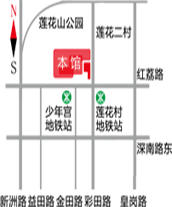
- Comment article: Shao Dazhen writes about Ding Guanjia
-
Sincere and sincere emotions and intentions
——Ding Guanjia's Ink Painting Landscape
Shao Dazhen
Ding Guanjia has been galloping in the field of ink painting for over half a century. After long-term study and exploration, he has established his own unique appearance in the field of landscape painting. His painting style is down-to-earth and showcases his skills, gentle and genuine emotions, and his scenery contains poetry. It combines the beauty of the south and the strength of the north, with a pure style that is both refined and popular.
Guan Jia was born on Chongming Island, the mouth of the Yangtze River in Jiangsu Province, and has been working in the historical and cultural city of Zhenjiang for a long time. During his twenty years as the director of the Chinese Painting Academy in Zhenjiang, he was able to enjoy a bird's-eye view of the surging Yangtze River and the passing ships at the peak of Beigu Mountain, where the academy is located. He has a special affection for water. The beautiful natural scenery of Jiangnan, the gently defined mountains, and the colorful fields have nourished his soul and cultivated his character since childhood.
Guanjia is a person of integrity, treats others sincerely, handles things seriously and responsibly without fail. This also affected his growth in painting. In his early years, while studying painting in the Department of Fine Arts at Nanjing Normal University, he received education from renowned teachers such as Fu Baoshi, Chen Zhifo, Lv Sibai, Huang Xianzhi, Qin Xuanfu, and Yang Jianhou. With a strong interest, he extensively absorbed the strengths of various schools of thought. When recalling the learning scenes of the past, he deeply understood that the reason why he was able to walk on the path of art today is closely related to his education from teachers with different cultural backgrounds and artistic cultivation in school. He believes in avoiding certain foods in painting. In order to achieve the ideal of showcasing his talents and serving the general public through art, he has been tirelessly and tenaciously pursuing it. He has his own opinions, does not follow the trend, does not pursue fashion, is not stubborn or conservative. He closely follows the theory and practice of the art world, absorbs fresh knowledge through contemplation and selection, and enriches his artistic cultivation. He respects the tradition of freehand brushwork in literati painting, practices calligraphy for a long time, and studies the principles of calligraphy in painting. From his works, it can be seen that his brushwork skills are constantly improving. He highly praised the arduous efforts and tremendous achievements made by Xu Beihong, Jiang Zhaohe, Li Keran, and others in promoting the transformation of Chinese painting through the integration of Chinese and Western cultures. He greatly admires Lin Fengmian, Wu Guanzhong, and others for daring to challenge the inherent brushstroke patterns of traditional Chinese painting and their innovative explorations in color and ink. Guan Jia has a sharp thinking, broad mindedness, and an open perspective, while also steadfastly practicing painting. His landscape painting creation maintains a never-ending vitality.
Guanjia is well aware of the strengths and weaknesses of traditional literati painting. In the end, literati painting took pride in imitating ancient people, distancing itself from life and nature, ignoring resemblance in form, and flowing into emptiness; Due to the narrow concept of focusing on "ink and wash as the top priority" and neglecting other language factors such as color, the expansion of their expressive language is limited... Today, literati painting must maintain its freehand spirit and traditional brushwork while appropriately absorbing new nutrients in order to adapt to the changes of the times and people's new aesthetic needs and promote it. This is an inevitable trend and also a necessary path for all programmatic artistic changes and innovations.
Guanjia inherits the predecessors of the New Jinling Painting School, such as Fu Baoshi, and introduces traditional Chinese painting into the exploration of new creations facing reality and nature. Following the principle of valuing both learning from ancient people and learning from nature, he adheres to sketching from life, draws inspiration from real life and nature, and collects materials. Guanjia has developed a habit of sketching since his student years, emphasizing serious observation and experience of objective nature. He said, "In order to draw well, one can only observe carefully and draw carefully from life. This indeed requires effort to gradually have more painting language, gradually imprint one's heart and hand, and create." It is precisely because Guan Jia has put in hard work in this area, has sufficient visual experience reserves and rich spiritual experience, that the personality factors in his painting language are becoming more prominent, and his creative consciousness is also becoming stronger.
Guanjia is good at discovering beauty in ordinary natural landscapes. Although his footprints cover famous mountains and rivers, his paintings often depict seemingly ordinary fields, rivers, hills, grasslands, and fishing boats... He uses traditional brushstrokes such as hooks, lines, dots, erasing, texturing, and dyeing, combined with the shape, full composition, and light and color experience of Western painting, to vividly depict natural scenery and express his subjective feelings. He is good at using ink, thick, light, dry, and astringent, seeking its beauty in change; He dares to use color, and some works focus on color as the main color, using it as ink, and even using a small amount of ink to embellish a picture with a simple color as the main color tone; Sometimes ink and color harmonize and blend together; Sometimes color and ink complement each other and complement each other. In order to present a rich hierarchy of ink and color in the picture, ink through color, color through ink through color, using ink to pressure color, using color to pressure ink, or using ink to contrast color, using color to contrast ink, are all His commonly used techniques. He is so fond of colors, firstly because he wants to express the distinct atmosphere of the natural world in Jiangnan during the seasons of spring, summer, autumn, and winter; Secondly, he was conscious of changing the language of Chinese painting. Based on the similarity between the laws and principles of Chinese and Western painting, although the materials and techniques are different, they can be communicated and borrowed from each other without the need for a clear understanding. He boldly absorbs the use of Western painting colors to enhance the expressive power of ink painting.
Guanjia followed the path of "integration of Chinese and Western painting" in the creation of landscape painting. The evolution history of Chinese painting in the 20th century has fully proved that inheriting the tradition of literati painting and exploring "opening up the present with the past" and integrating Chinese and Western painting and "using the outside for the inside" are both effective ways to inherit and promote Chinese painting. The goals of both are consistent: to pursue the traditional Chinese cultural spirit and its modern form. The Chinese cultural connotation of landscape painting, which is understood by Guan Jia, is rooted in the spirit of harmony and benevolence between man and nature, which is reflected in the harmonious relationship between humans and nature. This spirit is reflected in the true emotions conveyed through language such as brushwork, form and color, and composition in painting. Guanjia's landscape paintings have a strong sense of lyricism, which is reflected not only in the selection of scenery, but also in the careful combination of dots, lines, surfaces, and colors. His paintings have gradually shifted from an early focus on realism to a strengthening of freehand brushwork, with recent works placing greater emphasis on expressing one's mood. He said, painting, painting is actually painting the mind. It is the thought-provoking and genuine emotions and meanings in many of his works that have conquered many art loving audiences both domestically and internationally, and have also received praise from industry experts.
Towards the direction of "painting the heart and mind", Guanjia's future art path will become increasingly broad!
June 12, 2012



